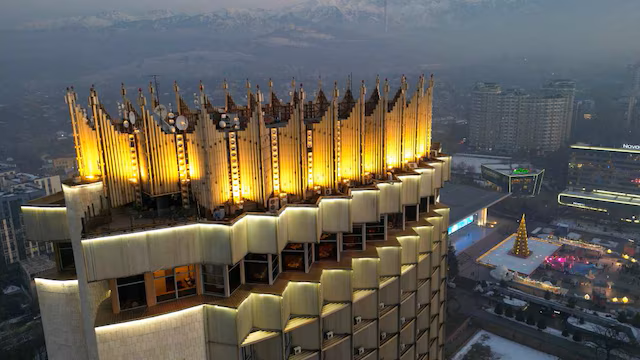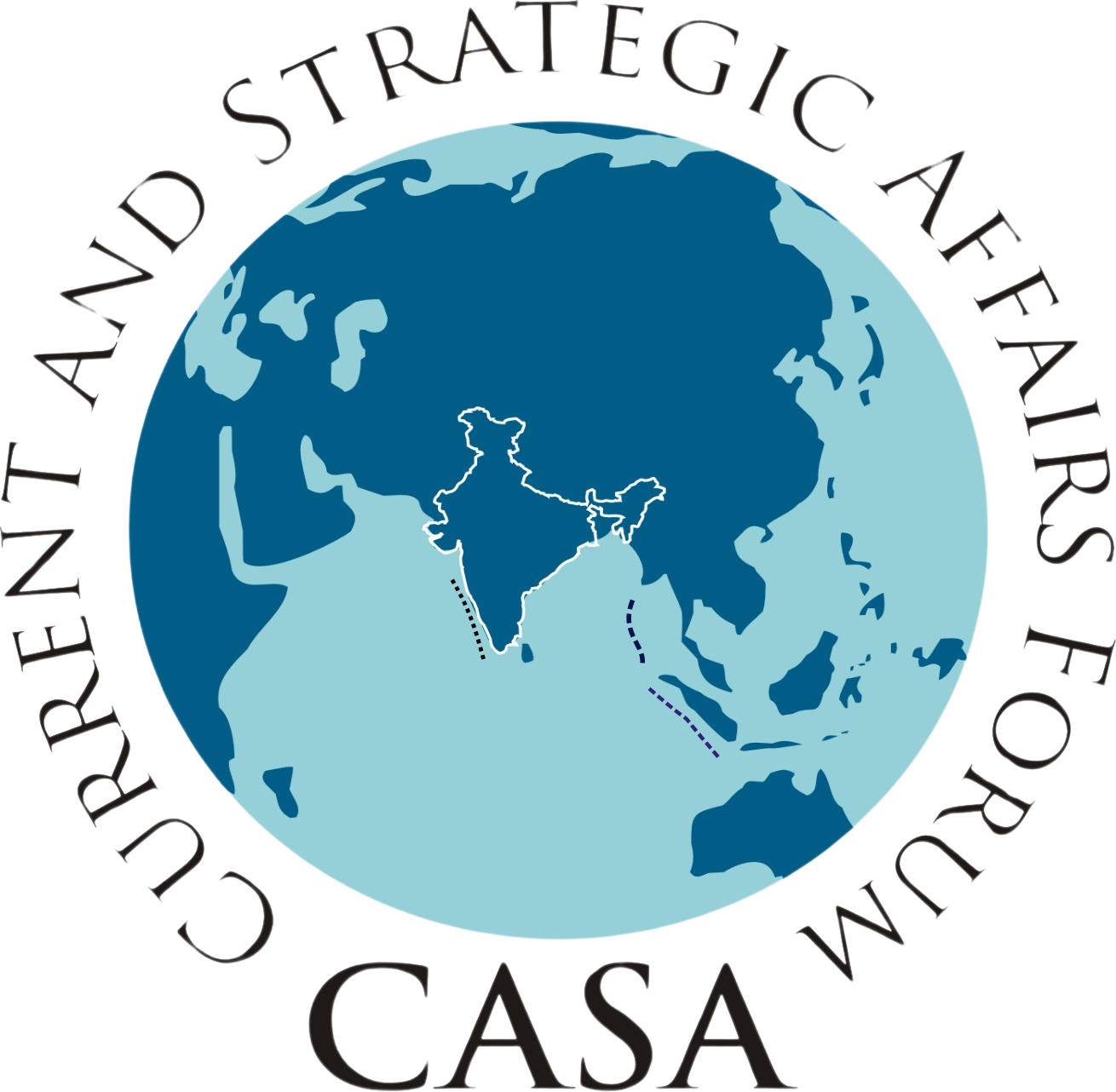Diversifying for Resilience: Why it is the strategic path to India’s sustained growth
- May 19, 2025
- Posted by: Anil Trigunayat
- Categories: India, Kazakhstan

India’s engagement with emerging middle powers takes on renewed significance now, and in fact, one of our key partners is Kazakhstan, Central Asia’s largest economy, which represents a reliable partner with potential relevance for India’s diversification efforts, writes Amb. Anil Trigunayat, a global affairs expert, and a former Indian Ambassador to Jordan, Libya and Malta.
India’s economic ascent over the past decade has been remarkable, positioning the country as a global growth engine and a magnet for investment and innovation. India is the largest democracy and most populous country and with the highest youth dividend with fastest growing major economy. It is currently the third largest economy by Purchasing Power Parity (PPP) criteria and in real terms expected to reach there by 2027.
Yet, as the world becomes more fragmented and supply chain vulnerabilities are exposed by geopolitical tensions and shifting trade dynamics, India must now focus on building a more resilient and diversified economic architecture. The imperative to diversify is not new, but the urgency has never been greater. As global businesses recalibrate their sourcing strategies, India’s own efforts to broaden its economic base and deepen international partnerships will determine whether it can sustain high growth and secure its place among the world’s leading economies.
You May Like
Pahalgam terror attack: Is the China–Pak ‘ironclad axis’ putting India in a tight spot?


Exclusive: Perfect timing for Air Astana to expand in India as IndiGo cancels Almaty flightsRussia deepens its Taliban ties with eye on shared adversary ISISNirmala Sitharaman showcases India’s growth story at ADB annual meeting in MilanThe Indian government has recognised that resilience and prosperity require more than just expanding domestic capacity. Strategic diversification — across supply chains, export markets, and sectors — is now at the heart of India’s economic agenda. This approach has already yielded tangible results.
Production-Linked Incentive (PLI) schemes have spurred manufacturing in electronics, automotive, and pharmaceuticals, while investments in logistics and digital infrastructure have dramatically improved India’s attractiveness as a supply chain hub. These reforms, combined with India’s large, skilled workforce and cost competitiveness, have made it a natural alternative for global companies seeking to de-risk operations under the “China+1” strategy. The result is a more robust, digitally enabled, and globally integrated Indian economy.
However, true resilience demands that India look beyond its borders and cultivate a wider network of trade and investment partners. The lessons from other successful diversification efforts—such as those in Costa Rica and Georgia—underscore the importance of long-term policy commitment, investment in human capital, and the creation of supportive institutions.
India’s own experience confirms that broad-based reforms, a focus on governance, and targeted sectoral policies can accelerate diversification and attract foreign investment. But as global trade routes are disrupted by conflict and protectionism, India must also prioritize connectivity and new partnerships to secure access to critical resources and markets.
In this context, India’s engagement with emerging middle powers takes on renewed significance. Asia remains India’s critical “Karma Bhoomi’ in which South East, West and Central Asia are all quite important. India’s ‘Connect Central Asia’ policy has been in the works for some time and significant initiatives have been launched by PM Modi to improve the overland connectivity that was lost after India was divided in 1947.
In fact, one of our key partners is Kazakhstan, Central Asia’s largest economy, which represents a reliable partner with potential relevance for India’s diversification efforts. Bilateral trade has grown steadily, nearing $1 billion in 2024, while Indian investments in Kazakhstan have accumulated to over $460 million since 2005. Kazakhstan’s energy sector, particularly its production of oil, gas, and uranium, aligns with India’s ongoing efforts to diversify its energy sources and enhance supply security.
The country’s industrial base includes sectors such as mining and manufacturing, which may complement India’s needs for critical minerals and raw materials, while infrastructure initiatives like the International North-South Transport Corridor (INSTC) and greater air connectivity between Delhi and Astana are facilitating closer economic ties.
You May Like
Car owners are shocked by this instant price toolCars24Book Now
Kazakhstan’s resource reserves, strategic positioning, and emerging domestic industries represent an intriguing opportunity for India, who’s rapidly growing economy requires a steady supply of affordable energy and a reliable source of critical minerals – especially given their importance in emerging technologies such as electric vehicles and renewable energy systems.
This forward-looking strategy would also benefit from the clear and significant commitment that the Kazakh government has made to develop its industrial and technological sectors, including areas like digital infrastructure and artificial intelligence. As India seeks to secure its economic leadership and successfully navigate the modern digital economy, the multifaceted economic landscape of dynamic middle powers such as Kazakhstan can provide relatively untapped avenues for fruitful international collaboration and long-term prosperity.
To create and understand the potential adequately it is useful to have interactive broad-based mechanisms. One such is the upcoming Astana International Forum (AIF) 2025, taking place May 29th-30th, provides a valuable platform for Indian investors, and business leaders to engage with Kazakh counterparts and explore potential areas of cooperation.
The Forum, under the patronage of President Kassym-Jomart Tokayev, brings together stakeholders from government, industry, and academia to discuss global challenges including energy security, climate change, and economic resilience. While the Forum offers an occasion to deepen bilateral ties, it also highlights the importance of multilateral dialogue and regional cooperation in an increasingly complex international environment.
As India looks to the future, it continues to drive domestic reforms, invest in human capital, and foster innovation through wide-ranging focussed initiatives like Make in India, Skill India, Innovate India with ‘Vasudhaiv Kutumbakam’ as the guiding principle which can help foster closer partnership with Astana.
Equally important is the pursuit of a diversified and flexible network of international partnerships that can support India’s growth and stability especially as the trade wars and protectionism by major powers have become the new currency in a more insidious ‘Avatar’ . Engagement with countries like Kazakhstan illustrates both the promise and the complexities and the mutually beneficial premise of this approach. By combining strong internal foundations with strategic external relationships, India can better navigate global uncertainties and sustain its trajectory toward becoming a leading yet benign economic power.
—The author, Amb. Anil Trigunayat, is a former Indian Ambassador to Jordan, Libya and Malta, and currently heads the West Asia Experts Group at Vivekananda International Foundation.
